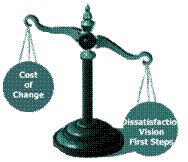
The literature of change management is filled with pieces of advice that are necessary but not sufficient. You need a burning platform, tools, and champions; you need to realign your organization’s incentives so that they support your new purposes. You know that each of these is important but that no one of them will do the job. The literature is also rife with advice that appears contradictory. You need leadership and strong direction, but you need consultation and buy-in. You need to make people move faster than they ever have, but you mustn’t get too far in front of them. You can’t do it alone, and they can’t do it without you.
In other words, for change to be anything but superficial and temporary, it must be systemic or—if you’ll pardon the jargon—holistic. Social change is no more the sum of its parts than a person is the sum of his. It has to involve every aspect of an organization working together. You know this—and so do we at HBR—but, nevertheless, much of the writing about change management takes the form of checklists and bullet points.
See full Article.



